The Search for the Portrait that Belonged to Kittel Pages at The Face Of Bach
The Queens College Lecture of March 21, 2001 - Page 6 - Bach's Skull
The Face Of Bach
This remarkable photograph is not a computer generated composite; the original of the Weydenhammer Portrait Fragment, all that
remains of the portrait of Johann Sebastian Bach that belonged to his pupil Johann Christian Kittel, is resting gently on the surface
of the original of the 1748 Elias Gottlob Haussmann Portrait of Johann Sebastian Bach.
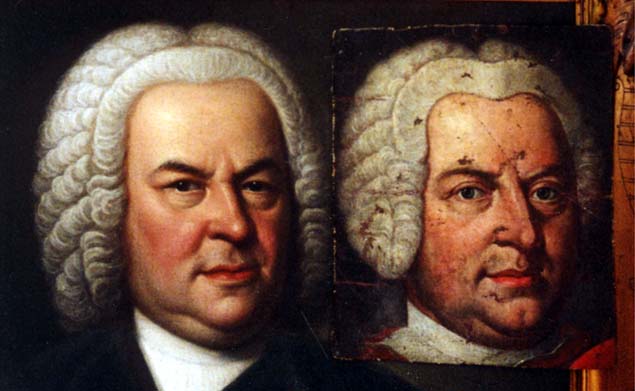
1748 Elias Gottlob Haussmann Portrait, Courtesy of William H. Scheide, Princeton, New Jersey
Weydenhammer Portrait Fragment, ca. 1733, Artist Unknown, Courtesy of the Weydenhammer Descendants
Photograph by Teri Noel Towe
©Teri Noel Towe, 2001, All Rights Reserved
The Search for the Portrait that Belonged to Kittel
The Queens College Lecture of March 21, 2001
Page 6
Bach's Skull
Before beginning an examination of the Weydenhammer Portrait Fragment, I must address the fundamental question of what are the
common physiognomical features that a portrait that is allegedly a depiction of Johann Sebastian Bach needs to have in order to be
considered either an accurate depiction of his face or an authentic portrait from life.
For this purpose, we must first determine what the acceptable reference images are to be.While I personally consider the Meiningen
Pastel to be genuine, it is my conviction that, in circumstances such as these, the only standards that are acceptable as reference
images are those that are so considered by the overwhelming majority of specialists in the field. This is in an application of what I
call the Mendel Principle, in honor of Arthur Mendel, who -- I shall never forget it -- in a preceptorial in Music 303 (his course on
Bach, naturally!) during my Junior year at Princeton, told us that, "A fact is what a majority of acknowledged authorities on a given
subject agree to be true at a given moment."
Applying the Mendel Principle to the Bach iconography in the year 2001, we are left with three reference images. These are:
The 1748 version of the Haussmann Portrait, the 1746 version of the Haussmann portrait, and the skull.
Let me discuss them in reverse order, beginning with the skull.
In 1894, the enlargement of the Johanniskirche in Leipzig, in the graveyard of which Bach's remains had been laid to rest on July 31,
1750, created a legitimate opportunity to try and locate the grave, which had not been marked with a tombstone of any kind. Such
an undertaking normally would sound foolhardy, but, in the case of Bach's grave, there were certain bits of evidence that made the
effort one with a more than reasonable chance of success.
"[Its precise site was unknown," as Charles Sanford Terry wrote in 1928,
"but tradition placed it six paces from the south door of the Johanniskirche....the reconstruction of the church involved
the demolition of its walls and the inclusion within the enlarged building of ground hitherto outside it. The removal of
material, and excavation for the new foundations, afforded an opportunity to search for Bach's grave, and work was
begun forthwith upon the plot in which tradition located it. A further clue was afforded by the knowledge that Bach was
buried in an oak coffin, a detail of value seeing that, of 1400 persons buried in 1750, he was one of only twelve coffined
in that wood. After three days' fruitless digging three oak coffins were exposed on 22 October 1894, one of which
contained the almost perfect skeleton of an elderly male, well proportioned, not large of stature, with massive skull,
receding forehead, shallow eye-sockets, and heavy jaws. The skull was forthwith compared with Haussmann's and
other portraits, a collation which revealed striking physiognomical similarities. The sculptor Karl Seffner was
commissioned to model a head upon a cast of the skull, and after an exhaustive and scientific investigation the remains
were admitted to be those of Bach." (Charles Sanford Terry, "Bach, A Biography", Oxford, 2nd Ed., 1932, p. 279 -
280, footnotes omitted)
The results of that "exhaustive and scientific investigation" were published in 1895. This official "Report to the Government of the
City of Leipzig", entitled Johann Sebastian Bach. Forschungen über dessen Grabstätte, Gebeine, und Antlitz., from the
commission headed by the noted anatomist Wilhem His, is a difficult item to find, and, despite the frequency with which it is
mentioned in the literature and the controversy and the curiosity that it has engendered and continues to engender, it has never been
reprinted in its entirety to my knowledge.
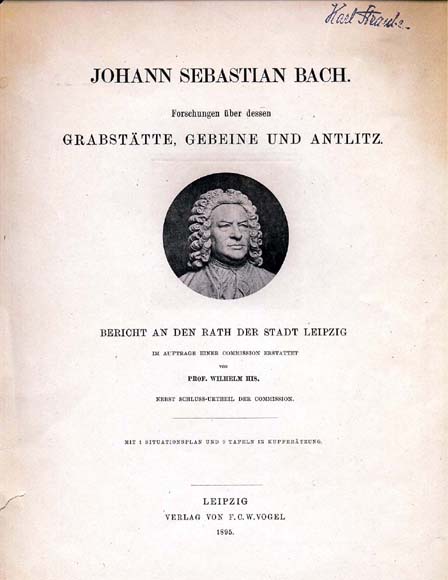
The Exhumation Report of 1895, as I shall refer to it henceforth, is a document of incalculable value.
The Exhumation Report of 1895, it must be admitted, is also the source of much frustration. It contains no photographs of the
exhumation itself, for example, and, other than the components of the skeleton itself, the objects exhumed in the excavation are
neither meticulously measured and described nor exhaustively catalogued as they would have been had the exhumation been an
archaeological excavation of the kind that was already beginning to become the accepted scholarly norm.
Nevertheless, the Exhumation Report of 1895 is not in any way the hasty, inexact, and slap-dash job that it is sometimes suggested
that it is, and Wilhelm His was prominent enough in the fields of anatomy and histology in his own time to warrant an entry in the
New International Encyclopedia, published in New York, in 1913, a decade after his death:

The photographs of the skull in the Exhumation Report of 1895 make it possible not only to use the forensic anatomical evidence
that the skull provides when evaluating the authenticity of images that purport to be portraits from life of Johann Sebastian Bach but
also to re-evaluate the conclusions that were drawn by His and his colleagues, by using the then unknown 1748 Haussmann Portrait
as an additional standard for comparison and verification.
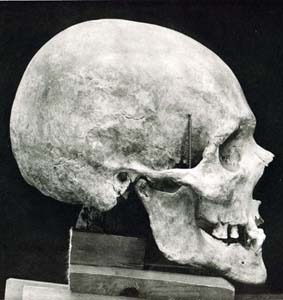
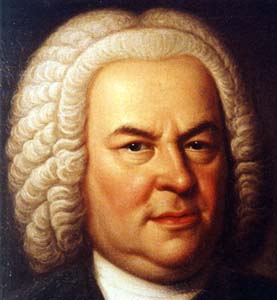

As we shall see in a few moments, the 1748 Haussmann Portrait accurately reflects the fact that, while he was not entirely toothless
at 63, as George Washington was, Johann Sebastian Bach did not have all that many teeth left in his jaws in the last years of his life.
Please click on 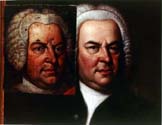 to advance to Page 7.
to advance to Page 7.
Please click on  to return to the Index Page at The Face Of Bach.
to return to the Index Page at The Face Of Bach.
Please click on  to visit the Johann Sebastian Bach Index Page at Teri Noel Towe's Homepages.
to visit the Johann Sebastian Bach Index Page at Teri Noel Towe's Homepages.
Please click on the 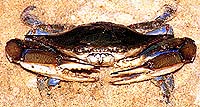 to visit the Teri Noel Towe Welcome Page.
to visit the Teri Noel Towe Welcome Page.
TheFaceOfBach@aol.com
Copyright, Teri Noel Towe, 2000 , 2002
Unless otherwise credited, all images of the Weydenhammer Portrait: Copyright, The Weydenhammer Descendants, 2000
All Rights Reserved
The Face Of Bach is a PPP Free Early Music website.

The Face Of Bach has received the HIP Woolly Mammoth Stamp of Approval from The HIP-ocrisy Home Page.